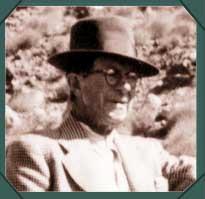The legendary Tasmanian prospector and discoverer of tin at Mt Bischoff in 1871
James Smith was born in 1827, the second of three children to John Smith and Ann Grant, who married after coming to Tasmania as convicts. James had an unsettled family life and in 1836, at the age of 9, he became the ward of John Guillan, a Launceston miller and merchant.
Smith wrote little about his early life, though it appears he had a rudimentary education in Launceston. At an early age he started working at Guillan’s flourmill at the Supply River, where he also began to take an interest in exploration and minerals. Smith’s fellow apprentice Charles Monds probably introduced him to Congregationalism (also known as Independent), which would provide much of his moral framework.
Smith’s zest for self-education was already evident in his adolescence. He bought books on many topics, possibly doing so as a result of the influence of the popular Scottish geologist Hugh Miller, who encouraged ‘self-culture’ – the idea that workingmen could improve themselves by achievement and study, particularly of the Bible. Smith and the journeymen he lived with attended the Independent Church where, according to Monds, Smith’s developing faith set him on his successful life’s course. It is also likely that membership of the church community shaped Smith’s lifelong friendships and business associations, perhaps even where he subsequently lived, for James Fenton, the pioneer Forth settler and Smith’s neighbour, was a Congregationalist and Charles Monds’s brother-in-law.
























 John Campbell Miles (1883 – 1965) was the prospector and pastoral worker who discovered the mineralisation upon which the famous Mt Isa Mine was established in Queensland.
John Campbell Miles (1883 – 1965) was the prospector and pastoral worker who discovered the mineralisation upon which the famous Mt Isa Mine was established in Queensland.